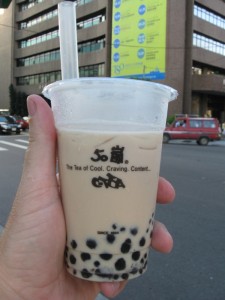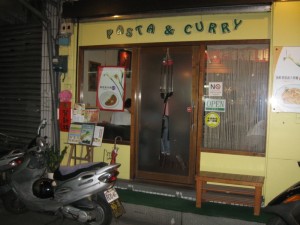Choosing a WordPress Theme
I would like to list all the astonishing and fun things I did on Saturday, but not having done many astonishing and fun things, I can’t. What I did instead was try to master some more of the inner workings of WordPress. That wouldn’t take so long except that I find everything so non-intuitive that I need to go some distance into actually setting something up before I realize what it is and whether I like it or not. If I don’t like it (almost always), then I have to delete everything I’ve done and do it all again using a different system. It’s very time-consuming, but I don’t see any other way to do it.
I was doing all of this partially because I needed to choose a theme. I recently purchased a package of assorted themes. The company was having an all-for-one sale, and I was tempted enough to buy it. It turned out to be a very good idea because the themes, just like WordPress, are not intuitive. There is a demo of each theme at the company’s website, but the demo can give you only the barest idea of what the theme is like. It might look great on their website, but, as I found out, that same great look might not be repeated with your content. It might not suit your content at all, which is mainly what I discovered.
This company had many great-looking themes, and I narrowed them down to the five or six that I thought would suit me. I activated each theme in turn, and I quickly discovered that almost none of them really worked for me – and for the same simple reason: the main column was too narrow. In all of these themes, the basic display of a post had a somewhat narrow column, which meant that photos were not accommodated very well. I could put pictures into the post, but I couldn’t wrap text around the photos. There simply wasn’t enough room. And when a post went on at some length (as mine tend to do), the screen would end up with just a skinny little column down the center with vast expanses of empty white area on either side. It looked silly and wasn’t very efficient. To my surprise, none of these themes had the very simple option of widening that central column. There was just one layout and that was it.
Fortunately, there was one theme that had a wider column, and it was the one theme that had attracted me to this company in the first place. I activated that theme, and after some fiddling around and playing around, I made up my mind to give it a shot and keep it activated for now.
I realized it was important to choose a theme first because for better or for worse, the theme is central and gives your website its form. And the form, to a great extent, dictates content. I’ve been fighting that for a long time now, thinking that I should be able to decide what my content will be and then build a form to match that. However, short of going to university and studying computer programming and HTML and PHP for three years, that wasn’t going to happen. I decided to bow to the inevitable and work within the limitations and structure of WordPress and a WordPress theme. That’s just the way it is. Most people, I’ve realized, do that without even knowing it. All the limitations and problems and lack of structure are there on their website or blog, but most people are simply blind to it. They’ve chosen a theme and set up the parameters and then when they write a post, they assign it to a category and give it a date and that’s it. After that, they let WordPress and the theme organize it – or as I see it, not organize it.
Very quickly, I came to the realization that choosing a theme and then working with it was a wise idea. Without that theme to work with, I find it difficult if not impossible to come to grips with the basic inner workings of WordPress as it applies to my content. Once I chose my theme and activated it, I saw that once more, all the work I had done to organize my content was incorrect. I had to delete it all and start all over for what felt like the twentieth time. I still ended my WordPress day on a positive note, though, and not one of continued frustration. I felt that I had actually reached some kind of positive situation. This was not another dead-end and the work I do now was work that was actually going to result in something permanent. I wasn’t going to end up just wasting my time once more.
This little blog post is part of an experiment to see if that assumption is right. This post is highly personal and somewhat arcane. Not many people would be interested in it or even understand what I’m talking about. These are just personal ruminations. I want that to be a part of my website, but the way things are working out, I don’t want it to be central or even visible on my main page. The idea is that I want the website to be modular. I want it to be able to do all things. One module will be the “blog” itself – a kind of journal or diary of interest only to people who know me (and probably not even them). These are the posts that will often begin with something like, “I just woke up and I am having my first cup of coffee of the day.” I want content like this to be part of my website, but I don’t want it to be on the front page – the landing page. I want these posts to be grouped together in a special category called “Blog” or whatever and tucked away in the corner. One can click on the “blog” menu option and read the blog posts or not.
The problem is that the way WordPress works, organizing things by date, this may not be easy. The latest post appears first by default. I’m hoping this theme will allow me to choose which categories will display on the landing page and which will not. Even in this theme, there is window set aside for the latest post. It is a magazine style theme, but it does have a blog element – a place meant to display the latest post. I’m hoping I can have the best of all worlds. I want my latest post to go there, yes, but I don’t want these personal blog entries to be counted as a latest post. Can this be done? Probably not, but we’ll see. If, as I suspect, I can’t do that, then I’ll have to find a workaround. I always seem to need workarounds in WordPress. In this case, a simple workaround would be to pre-date the posts. I could use dates from like a hundred years ago. If I keep them consistent, they will still be in order within that personal blog category, but the system won’t see them as latest posts. It will see them as 100 years old. That sounds ridiculous, (and it is ridiculous) but I find I often have to do ridiculous things to make WordPress produce the results I want.
Oh, and I’m about to have my first cup of coffee of the day.
Follow-up: Well, things did not work out as planned. I created a category called “Blog”, and I posted this entry and assigned it to that category. Since this is my latest post, it did in fact show up on the front page in the latest post box. I looked around in the various menus and settings, and I didn’t an option to exclude any particular post or category from the latest post feature. As with all things WordPress, the date remains supreme. Posts are ordered and structured and organized based on the date they were published, and there is little you can do about that. It’s just the way it is.




